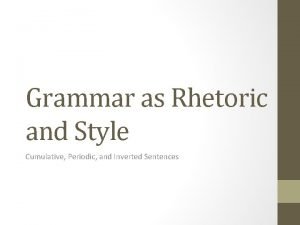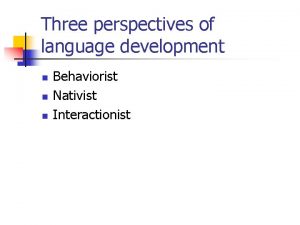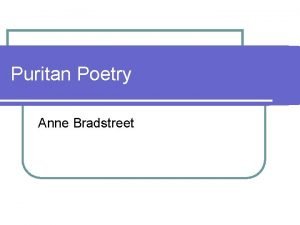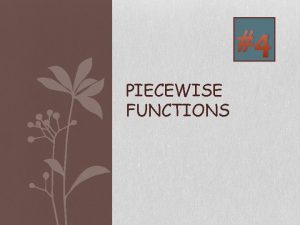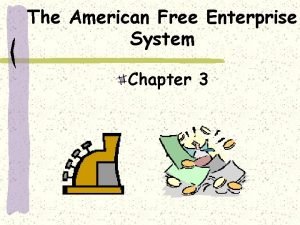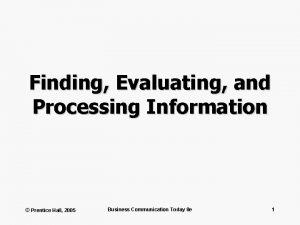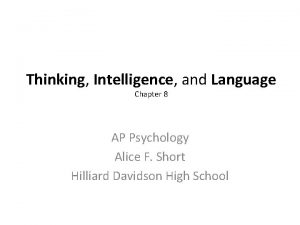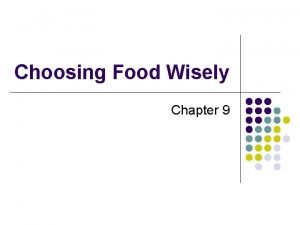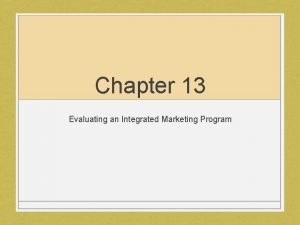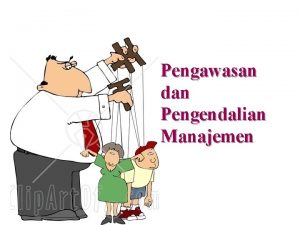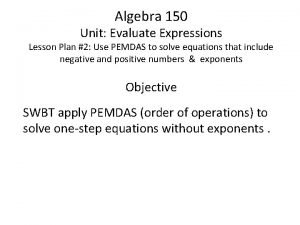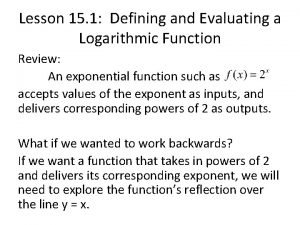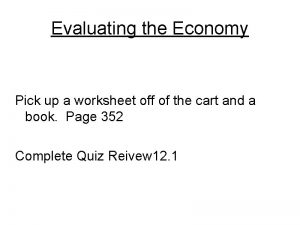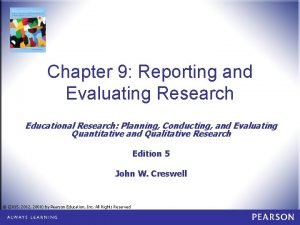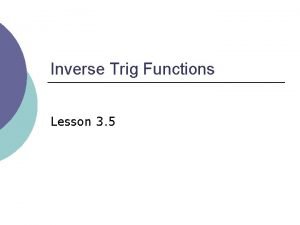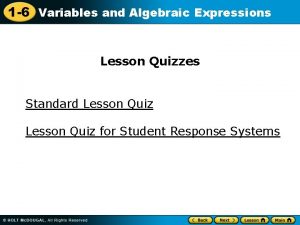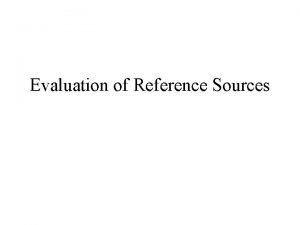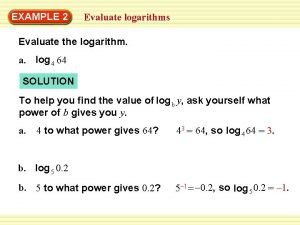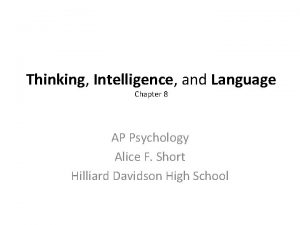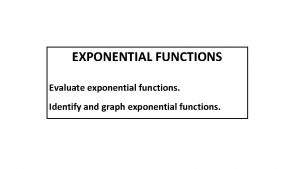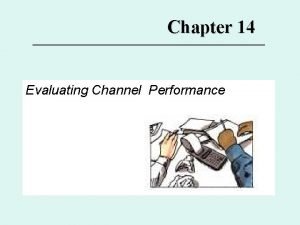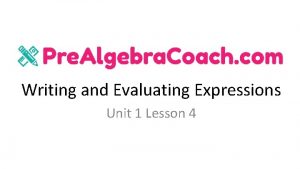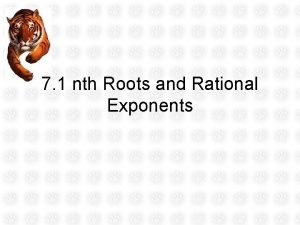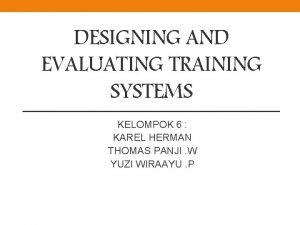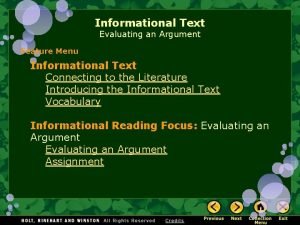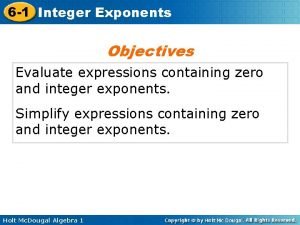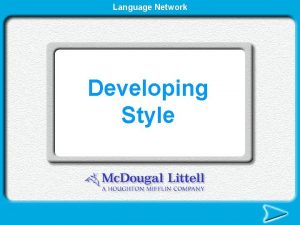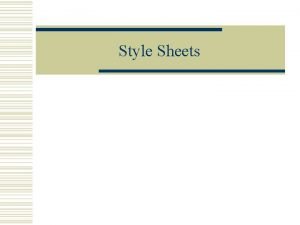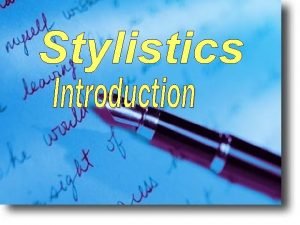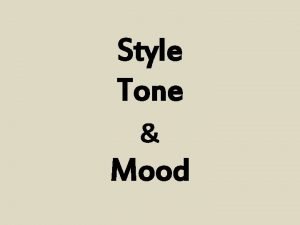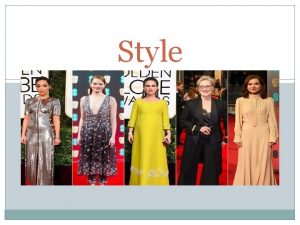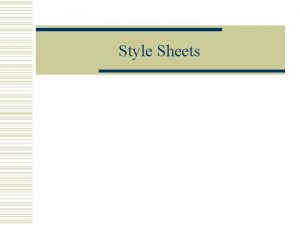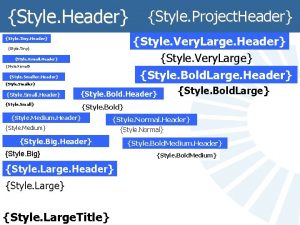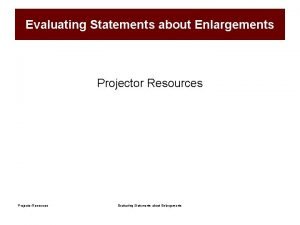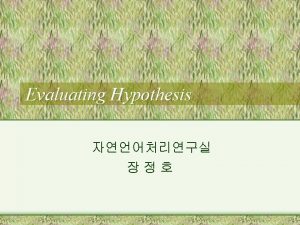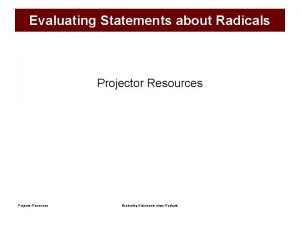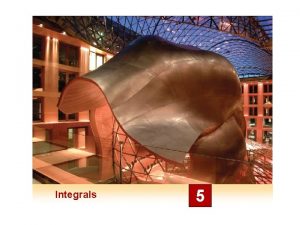Evaluating StyleVoice What Is Style Style is a




















































- Slides: 52

Evaluating Style/Voice

What Is Style? Style is a writer’s distinctive way of using language. It is through this use of language that a writer creates his or her voice. Style can take many forms. Formal/Informal Comical/Serious Plain/Ornate [End of Section]

VOICE Every author has his or her own voice. Voice is one’s style or personality. Writers make conscious choices- they carefully select their tools and use them in ways that create certain effects. It is these choices that create voice. Good readers learn to recognize and understand the effects of these choices.

VOICE Whenever we read, we should consider the conscious choices made by the writer. Start asking yourself these basic questions: q. What is he/she (or the work) saying? (What does the work mean? ) q. How do you know? (What evidence can you find in the work to determine the meaning? ) q. How does he/she do that? (What tools does he/she use to create meaning and how does he/she use these tools? )

VOICE • However, voice is not only seen in writing. It is present in all forms of artistic media. • Before we even look at written words, let’s view and listen to some voices.

LET’S SEE IT…

VOICE IN ART- VINCENT VAN GOGH, SELF-PORTRAIT 1. What is Van Gogh saying about himself? Complete this sentence as if you were the Van Gogh of this portrait. **Base your statement on the picture, not your own feelings. “I am…” 2. How do you know what Van Gogh is saying about himself? What evidence can you find in the picture that supports your statements?

VOICE IN MUSIC • We will listen to Beethoven’s Fifth Symphony. • As you listen, answer the following questions. • http: //www. youtube. com/watch? v=_4 IRMYu. E 1 h. I 1. What kind of voice does this music have? Pretend the music is kind of a self-portrait. What is Beethoven saying about himself? Complete this sentence as if you were Beethoven. “I am…. ” 2. What evidence can you find in the music to support your statement? Think of specific instruments, the tempo, the volume, etc.

LET’S LOOK AT SOME WRITING…. The little pink fishes swam upstream and died. Answer: 1. Is this sentence sad? Think about it carefully. Don’t focus on the idea of a dying fish. Instead, focus on the sentence itself and the effect it produces. Does the sentence make you feel sad, or like crying? Why or why not? 2. Rewrite this sentence, making it a very sad version. What conscious decisions did you make to create a sad version of the sentence? As you make this sentence sad, you are on your way to using voice in your writing.

VOICE • There are several tools writers use to write with a clear voice. These basic elements of voice are: q. Diction q. Detail q. Figurative language q. Imagery q. Syntax q. Tone

Diction, or word choice, is one of the main elements of style. Long, elegant words Short, everyday words vivacious lively nonplussed at a loss pandemonium chaos Formal words Informal words I kindly accept your invitation. I’ll be there. in a difficult situation in a jam was indisposed felt under the weather [End of Section]

Diction So, why is careful word choice (diction) so important for writers? Aside from being the foundation of voice and all good writing…

Connotation & Denotation Word choice is important because, although several words might have the same denotation, their connotations could be very different. A word’s connotation will have an impact on a reader’s interpretation of a writer’s work.

Connotation & Denotation- the literal, dictionary definition of a word. Woman- a female human Man- a male human What other words do you know that also mean “female human” and “male human”? List them!

Connotation & Denotation Connotation- the emotional or underlying association that a word has. Connotations can be: good (honorific) neutral bad (pejorative)

Connotation & Denotation Look back at the words you listed for “woman” and “man”. What do you associate each word with? What is the connotation for each word? You’ll see that each word means something very different!

male

female

A redheaded woman was there with Kent. Kate could see her rummaging through the cabin, dumping drawers and knocking things from the shelves of cabinets. 1. What picture do you get in your mind when you read the second sentence? 2. How would the meaning of the sentence change if we changed some of the words? For example: Kate could see her searching through the cabin, emptying drawers and taking things of the shelves of cabinets. Compare the connotation of this version of the sentence with that of the original version above. 3. Write a sentence describing a small boy making a mess in a restaurant. Choose words that are clear, concrete, and exact.

M. C. heard him scramble and strain his way up the slope of Sarah’s mountain. 1. What does it mean to “scramble” and “strain” up a mountain? What picture do you get in your mind? What is the connotation of each of these words? 2. How would your mental picture change if we rewrote the sentence like this: M. C. heard him walk up the slope of Sarah’s mountain. 3. Write a sentence describing someone slowly climbing up a flight of stairs. Choose words that are clear, concrete, and exact.

Syntax Sentence patterns—the ways writers construct sentences—also help create style. Syntax is the way words are arranged in sentences. In other words, syntax is sentence structure.

Syntax When evaluating syntax, look at: Word Order Sentence Length Punctuation

Word Order – changing word order changes the meaning in sentences. Examples: Jim said that he drives only a truck. (He drives nothing else) Jim said that only he drives a truck. (No one else drives a truck) Only Jim said that he drives a truck. (No one else said it)

Sentence Length – sentences could be short or long to create an effect on the reader. Examples: • Help! • He ran. He shivered. He gasped. • The boy swam through the river, keeping a steady pace with each stroke, thinking of the medal at the finish line, hoping to see his family there, wishing for acknowledgment for his hard work and motivation.

Punctuation – used to catch the reader’s attention and emphasize some importance. Semi-colon ; Colon : Dash - Italics Ellipses. . .

Syntax Practice Example #1 When I woke up it was light. It was awfully quiet. Too quiet. I mean, our house just isn’t naturally quiet. The radio’s usually going full blast and the TV is turned up loud and people are wrestling and knocking over lamps and tripping over the coffee table and yelling at each other. Something was wrong, but I couldn’t quite figure it out. Something had happened…I couldn’t remember what. 1. The author starts the passage with 2 short sentences, a sentence fragment, and another short sentence. Then, she writes two longer sentences. What is the purpose of each of these sentences? 2. The author uses ellipses in the last sentence to show that something has been left out. From what you read, what do you think was left out? 3. Think about a time you got a present you knew you wouldn’t like – you knew it even before it was opened. Write a sentence about this experience. Create tension by using ellipses to show that some important words have been left out.

Syntax Practice Example #2 Like sunshine after a storm were the peaceful weeks which followed. 1. What is the subject of the sentence? What is the main verb? Is this the usual order of subject and verb in English? 2. How would the meaning and impact of the sentence be different if it read: The peaceful weeks which followed were like sunshine after a storm. 3. Reorganize the sentence below. Start with the simile and reverse the normal order of the subject and verb: Spring break came like a time of calm winds after a hurricane.

MAKING COMPARISONS FIGURES OF SPEECH FIGURATIVE LANGUAGE

Lee was the apple of my eye. © 2002 -2003 clipart. com How time flies! © 2002 -2003 clipart. com WHAT IF EVERYTHING WE SAID WERE TAKEN LITERALLY?

WHAT IS A FIGURE OF SPEECH? A figure of speech is a word or phrase that describes one thing in terms of another and is not meant to be understood on a literal level. • The kites swayed in the wind like a couple dancing to a slow song. © 2002 -2003 clipart. com • Figures of speech involve some sort of imaginative comparison between unlike things.

• The literal term is what we are comparing to something else. It’s what’s real; it means what it is. For example, the literal term in the metaphor, “The test was a bear!” is test. We are literally talking about a test. • The figurative term is what is being compared to the literal term. The figurative term means something other than itself, something non-literal. The figurative term in the metaphor used above is bear. The test is not a bear, but it has some bearlike qualities that can help us understand just how hard the test was.

Figures of Speech Whether a writer prefers to use figurative or literal language also affects style. Figurative language Literal language He felt as trapped as a cat in a vet’s office. He felt completely trapped. Her fingers were She played the piano with a hummingbirds’ wings light, quick touch. brushing over the piano keys. My brother looked as if he’d suddenly awakened to find himself on Mars. My brother looked utterly confused. [End of Section]

Kinds of Figures of Speech Some common types of figurative language • similes • metaphors • personification • hyperbole • symbol • irony

WHAT ARE SIMILES? Similes are comparisons between two unlike things, using a word such as like, as, resembles, or than. Digital Image copyright © 2003 Photo. Disc, Inc. © 2002 -2003 clipart. com • The full moon glowed like an orange in the sky.

WHAT ARE METAPHORS? Metaphors are comparisons between two unlike things, in which one thing becomes another thing without the use of the word like, as, than, or resembles. • The full moon was an orange hanging low in the sky. CORBIS Images/HRW • Metaphors may be direct or implied.

Direct Metaphors Direct metaphors directly state the comparison between two things. • Direct metaphors use a verb such as is to tell us that one thing is something else. • My mind is a sailboat that wanders with the wind.

Implied Metaphors Implied metaphors suggest a comparison between two things without stating the comparison directly. • Rather than saying one thing is something else, an implied metaphor suggests that one thing is something else. • My mind sailed away from the turbulent waters of the argument in search of a peaceful harbor.

METAPHORS I was seven, I lay in the car Watching palm trees swirl a sickening pattern past the glass. My stomach was a melon split wide inside my skin. • What is the metaphor in this poem? What is the literal term? What is the figurative term? What does the metaphor mean? • How would the meaning and impact of these lines change if it simply stated, My stomach really hurt?

What Is Personification? Personification is a kind of metaphor in which a nonhuman thing or quality is talked about as if it were human. • Animals, objects, and ideas may be personified. • The angry, brooding storm clouds pelted me with their disapproval.

PERSONIFICATION The camp faced a wide cove of white sand palm trees. The bay was so perfectly blue, it looked like it had been retouched for a tourist brochure. Across the bay stood protective mountains, shoulder to shoulder, across the Concepcion peninsula. • Find the example of personification in the above passage. What are the literal and figurative terms? • Describe a place you like to go to in the summer. In your description, use at least one example of personification.

SYMBOLS • A symbol is a person, place, object or event that stands for itself and for something beyond itself, as well.

SYMBOLS Flowers and other things have been laid against the wall. There are little flags, an old teddy bear, and letters, weighted with stones so they won’t blow away. Someone has left a rose with a droopy head. • ***This passage is from a book about the Vietnam War Memorial in D. C. There are several symbols in this passage. Identify the symbols and explain what they mean. • What other traditional symbols do you know? Make a list here.

IRONY Irony is the difference between what we expect or what seems suitable and what actually happens. Writers include irony in stories to reflect the real world—a world where expectations aren’t always fulfilled and unexpected events often surprise us. Katie’s grandfather taught her to play chess a few weeks ago. Now, she consistently wins matches against her grandfather and the other members of his chess club.

IRONY In stories, we find three kinds of irony. • Verbal irony occurs when someone says one thing but means the opposite. • Situational irony occurs when an event is not just surprising but actually contrary to what we expected. • Dramatic irony occurs when the audience or the reader knows something important that the character does not know.

VERBAL IRONY • Verbal irony occurs when a writer or speaker says one thing but really means something quite different—often the opposite of what he or she has said. • Understatement is a type of verbal irony that occurs when a writer or speaker says less than what is meant. • Sarcasm is a kind of cutting irony, in which praise is used tauntingly to indicate its opposite meaning. “I am so energized I could run a marathon, ” murmured Sam as he struggled to keep from falling asleep.

SITUATIONAL IRONY • Situational irony occurs when what actually happens is the opposite of what is expected or appropriate. • Situational irony is often used to create trick endings. Susie and Kim dragged John to the movies. He complained in the car, in the ticket line, and during the preview. After the movie was over, though, he couldn’t stop talking about how great it was, and he even wanted to see it again.

DRAMATIC IRONY • Dramatic irony occurs when the audience or reader knows something important that a character in a play or story does not know. In a play about a family reunion, a group of young children gather around a campfire to hear their grandfather tell the story of the “Great Grizzly Ghost. ” When a growling bear suddenly appears in the distance, the children are frightened, but the audience knows that the bear is really just one of the older children wearing a bear suit.

IRONY “Oh, and there’s a thrilling shot of one of the kids being sick on a small fishing boat off the coast of Florida and we are hovering over him offering him salami and mayonnaise sandwiches. That one really breaks us up. ” • Remember that verbal irony implies the opposite of what is said, and irony may or may not be sarcastic (intending to hurt). The author describes a picture from the family vacation as thrilling. Is it ironic? Is it sarcastic?

IRONY Look at the following rewriting of the passage: We have a picture of one of the kids being sick on a small fishing boat off the coast of Florida. In the picture, we’re making fun of him and offering him salami and mayonnaise sandwiches. We know it’s wrong, but it’s kind of funny. • Which version is funnier? Why? How does “opposite” language help shape your understanding of the author’s attitude toward the vacation pictures?

IRONY • Write a few sentences describing a family outing you didn’t enjoy. Include at least one example of irony.

HYPERBOLE • A figure of speech that uses grand exaggeration to express strong emotions or to create a comic effect • “I called you a million times last night!” • “My back pack weighs a ton. ” • “My grandfather is older than dirt. ” • “ If Jim doesn’t ask me out I’ll die!”

HYPERBOLE He could shoot a bumblebee in the eye at sixty paces, and he was a man who was not afraid to shake hands with lightning. • This is an example of hyperbole, an exaggeration that is based on truth but carries the truth to such an extreme that it is no longer literally true. Of course, this man could not literally do these things. What, then, is the purpose of saying he could? • What if we changed the sentence to something like this: He could shoot very well, and he was not afraid of anything. Which sentence helps the reader more? Why?
 Periodic vs cumulative sentence
Periodic vs cumulative sentence Formal and informal writing style
Formal and informal writing style Nnn speech
Nnn speech How to sign a letter
How to sign a letter Puritan poetry examples
Puritan poetry examples Formal vs informal sentences
Formal vs informal sentences Developing and evaluating complex interventions
Developing and evaluating complex interventions Evaluating a firm’s internal capabilities
Evaluating a firm’s internal capabilities Piecewise function examples with answers
Piecewise function examples with answers Lesson 1 american free enterprise capitalism answers
Lesson 1 american free enterprise capitalism answers Criteria for evaluating secondary data
Criteria for evaluating secondary data Evaluating functions and operations on functions
Evaluating functions and operations on functions Finding evaluating and processing information
Finding evaluating and processing information Ap psychology thinking language and intelligence
Ap psychology thinking language and intelligence Management functions vocabulary
Management functions vocabulary Sales force evaluation
Sales force evaluation Evaluating food choices
Evaluating food choices Evaluating an integrated marketing program
Evaluating an integrated marketing program Textbook evaluation process
Textbook evaluation process Hayden smith and thomas nagel
Hayden smith and thomas nagel Product-market screening criteria should
Product-market screening criteria should Evaluating an integrated marketing program
Evaluating an integrated marketing program Perbedaan controlling dan evaluating
Perbedaan controlling dan evaluating Why is evaluating and adjusting a spending plan important
Why is evaluating and adjusting a spending plan important Recognizing the need for channel design decision.
Recognizing the need for channel design decision. Rumelt's criteria
Rumelt's criteria Order of operations lesson plan
Order of operations lesson plan 15-1 defining and evaluating a logarithmic function
15-1 defining and evaluating a logarithmic function Evaluating the economy worksheet answers
Evaluating the economy worksheet answers Reporting and evaluating research
Reporting and evaluating research Evaluating inverse trig functions without a calculator
Evaluating inverse trig functions without a calculator Evaluating a firm’s internal capabilities
Evaluating a firm’s internal capabilities Evaluating algebraic expressions quiz
Evaluating algebraic expressions quiz Evaluating your current fitness level
Evaluating your current fitness level Higher pe monitoring and evaluating
Higher pe monitoring and evaluating Criteria for evaluation of reference sources
Criteria for evaluation of reference sources Exiberating
Exiberating Evaluate the logarithm
Evaluate the logarithm Evaluating alternatives and making choices among them
Evaluating alternatives and making choices among them Exponential value
Exponential value Chapter 14 evaluating channel member performance
Chapter 14 evaluating channel member performance Writing and evaluating expressions
Writing and evaluating expressions Trade area analysis methods
Trade area analysis methods Rational exponents assignment
Rational exponents assignment How to evaluate function
How to evaluate function Criteria for evaluating secondary data
Criteria for evaluating secondary data Designing and evaluating training system
Designing and evaluating training system Evaluating algebraic expression
Evaluating algebraic expression Evaluating an integrated marketing program
Evaluating an integrated marketing program Evaluating arguments in informational text
Evaluating arguments in informational text Inverse vs reciprocal trig functions
Inverse vs reciprocal trig functions Evaluating trading strategy
Evaluating trading strategy Simplify integer exponents
Simplify integer exponents
